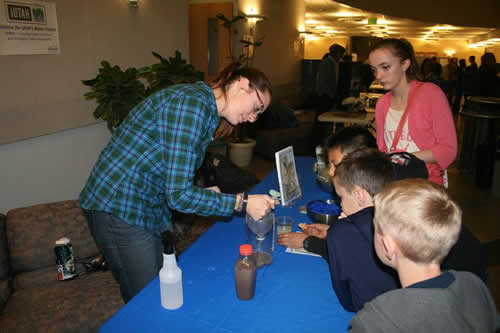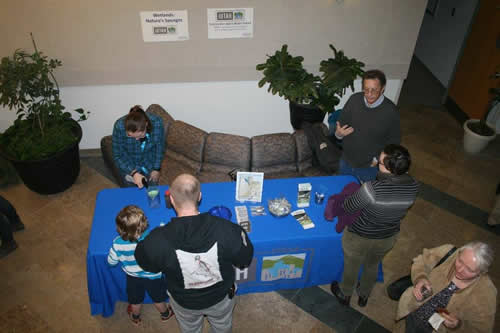News and Highlights
This is a list of past iUTAH EPSCoR news from 2012 to 2018.
April 29, 2015
How Thirsty are the Trees we Plant in our own Front Yards?
Trees provide welcome shade and can reduce the need to water lawns in the hot Utah summer. But trees also need water themselves. Understanding how mature urban trees use water can help give municipal land and water managers a better idea of how to conserve water. Quantifying water use by the most common tree species may prove particularly valuable because forests do not naturally occur in Utah’s urban areas. Planted trees within the city are maintained by irrigation, requiring large amounts of water. iUTAH researcher Dr. Richard Gill and his graduate student, Michael Bunnell, are studying urban tree sites in the Heber Valley of Wasatch County, Utah. This valley is a rapidly developing landscape where populations are projected to grow 90% by 2030. With this urban expansion and human population growth, more trees are expected to be planted within the region, placing a greater demand on the valley’s water resources.
Bunnell’s initial findings show a trend in planting deciduous tree species such as maple in new developments within this region. These species inherently use more water than conifer species such as blue spruce. Looking at particular tree species, Bunnell’s initial findings suggest that the biggest determinant of water use for a single tree is the anatomy of the sapwood tissue. For example, some trees conduct water through all living tissue, while in others, water movement is constrained to the current year’s growth only.
In a region where water resources are limited, it is important to understand the influence of planted forests on water use. To achieve this goal Gill and his students are collecting sap-flux measurements to quantify daily and seasonal patterns of transpiration in dominant landscape trees occurring within suburban reaches of the Heber Valley. Ultimately, this research will assist urban land managers in better identifying water-efficient tree species and aid in making decisions about planting densities.
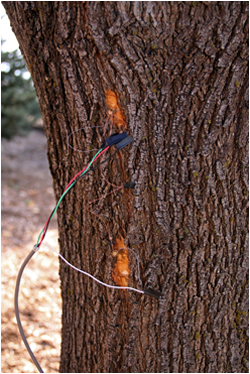
Fig 1: Sap flux sensors installed in an American sweetgum.

Fig 2. Enclosure for instrumentation collecting climactic data.
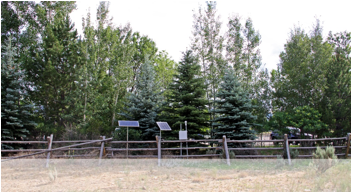
Fig 3. Sample of a field site location.
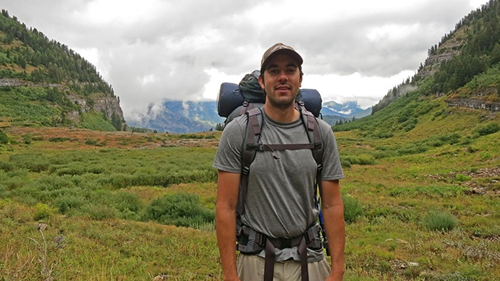
Micheal Bunnell
March 30, 2015
How Can City Planners Contribute to Urban Water Conservation?
Urban populations across the U.S. are growing, and planning for urban water supplies is critical to ensure that this most critical of resources is available to support future populations. While urbanization poses a multitude of challenges for providing and sustaining water resources, there are opportunities that exist in cities as well. Cities provide education and income, foster creativity and innovation, and will be the future of most of humanity. Research Assistant Philip Stoker and his PhD adviser Dr. Sarah Hinners are asking how city planners can contribute to urban water conservation efforts.
Stoker has interviewed over a dozen water managers and city planners across four western states to answer this question. The interviews revealed insights into current conservation efforts, barriers to water conservation, and the role of the city planner. The most important thing planners can do is to work water resources into their planning processes, and to consider water resources in each decision. This may involve including an individual from a water management agency on a land use planning organization’s staff. If not directly staffing a water supply planner, they should regularly involve their local water managers and incorporate these managers into planning processes and decisions. Some planners may consider water as “not in my jurisdiction,” and water may not even be on some planners’ radar. The goal is to break down these planning silos and recognize water resources in land use planning processes and decisions.
The goal of Stoker’s research is to highlight good examples and practices so that water conservation efforts across the U.S. can achieve the results they seek. He said he appreciates the contributions of the individuals who shared their expertise in water management and planning, and is preparing a summary report to be shared with the iUTAH team.
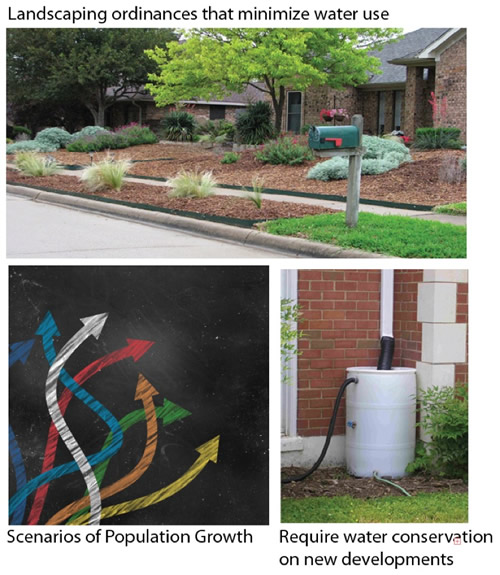
March 22, 2015
Former iFellow Recognized at Intermountain Sustainability Summit
Weber State student and past iFellow, Alexa Pierce won first place in the undergraduate category at the sixth annual Intermountain Sustainability Summit poster session held on March 5, 2015. She not only won first, but also snagged the People’s Choice Award for the 2015 poster session at the Summit.
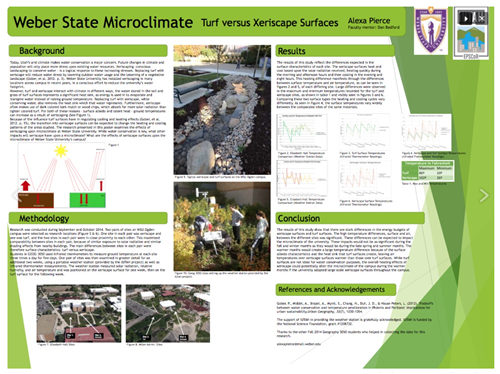
March 18, 2015
T.W. Daniel Experimental Forest in the News
KSL-TV, Deseret News and the Standard Examiner recently featured iUTAH researcher Scott Jones and his work in the Logan River watershed. The stories described how data gathered at iUTAH's GAMUT climate station on the T.W. Daniel Experimental Forest can help water managers understand the drought implications of Utah's warm winter. Watch the KSL News report and read the Deseret News and Standard Examiner articles.
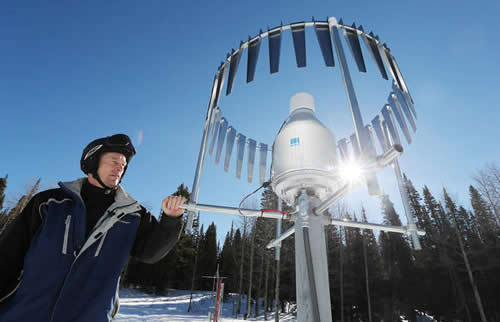
March 17, 2015
iUTAH Conceptual Framework Paper Published
iUTAH researchers have just published a paper entitled iSAW: Integrating Structure, Actors, and Water to Study Socio-Hydro-Ecological Systems. iSAW is an integrated framework for human-water system sustainability, using system components that include structure, actors, and water. This framework can be applied to multiple natural resource issues. Authors of the paper are Rebecca L. Hale, Andrea Armstrong, Michelle A. Baker, Sean Bedingfield, David Betts, Caleb Buahin, Martin Buchert, Todd Crowl, R. Ryan Dupont, James R. Ehleringer, Joanna Endter-Wada, Courtney Flint, Jacqualine Grant, Sarah Hinners, Jeffery S. Horsburgh, Douglas Jackson-Smith, Amber S. Jones, Carlos Licon, Sarah E. Null, Augustina Odame, Diane E. Pataki, David Rosenberg, Madlyn Runburg, Philip Stoker, and Courtenay Strong.

March 11, 2015
This month’s Science Unwrapped tackled the topic of Utah wetlands and the invasive Phragmites plant. iUTAH had a booth at the event with a simple experiment to explain the importance of wetlands in the Great Salt Lake ecosystem. We demonstrated how wetlands act as a natural filter or sponge by absorbing rain and floodwater, using a household sponge and muddy water to create a mini wetland ecosystem. iUTAH EOD staffers Caitlyn Lewis and Mark Brunson were at the booth to explain the experiment and answer questions about the iUTAH project.
“Wetlands are among Utah’s most critical ecosystems,” says Utah State University wetlands ecologist Karin Kettenring, feature speaker at this month’s Science Unwrapped. During this event, Kettenring explained the importance of wetlands and the role of wetland ecologists. She also described that the Great Salt Lake wetlands are vulnerable to a number of threats, including pollution and loss of habitat from development, climate change and invasive plants such as Phragmites.
There were many booths at the event that provided information and hands-on activities for the whole community. A Phragmites maze showed kids just how tall the pesky plants can be, while Kettenring’s graduate students taught about different wetland plants, animals, and soils. Science Unwrapped continues throughout the spring semester with the theme of “Great Salt Lake Today” during the USU “Year of Water".
